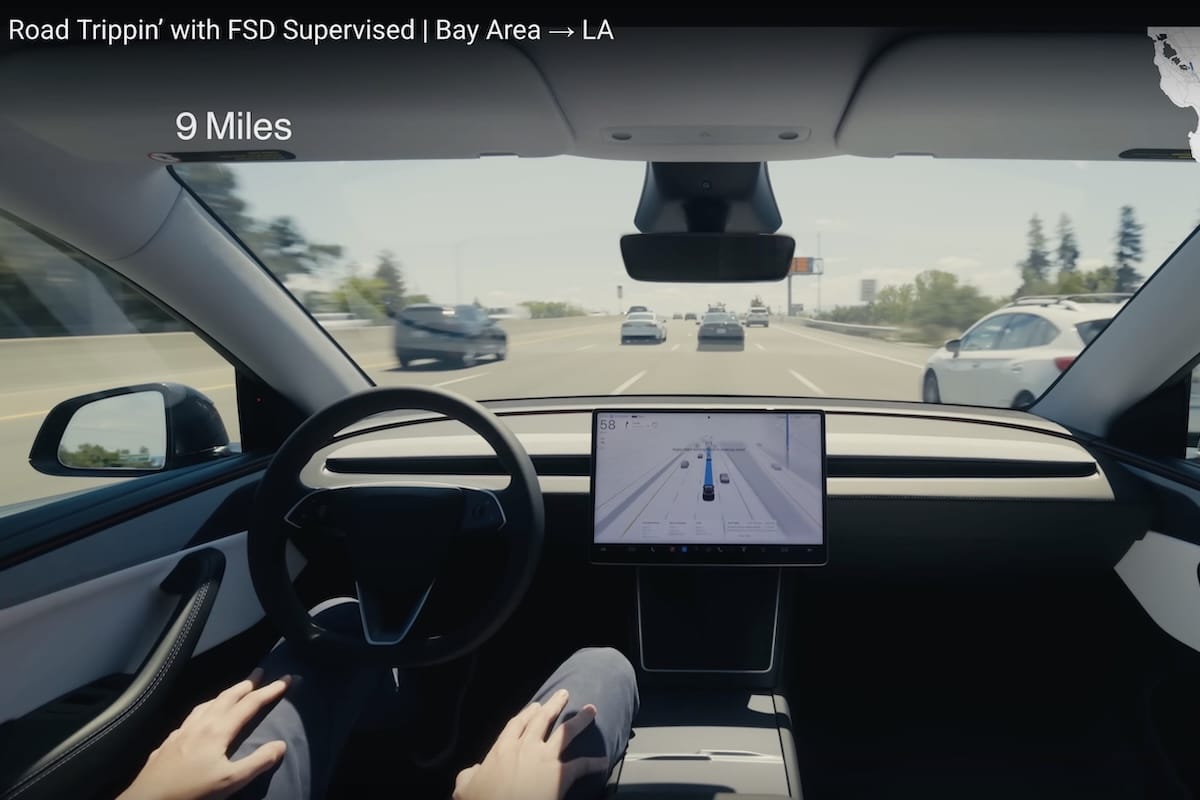Video: Tesla Takes You on a Road Trip with FSD Autopilot
Tesla condensed 7 hours of driving between San Francisco and Los Angeles into a one-minute video with FSD autonomous driving.
Tesla has launched a major global evangelization campaign for its FSD (Full Self-Driving) system. This system aims to quickly demonstrate its relevance, with Tesla believing it to be a revolutionary selling point, despite being extremely expensive (7,500 euros as an option in Europe where the system is not yet authorized…).
The race is stressful for Tesla as its Chinese rivals are likely even more advanced, though they are not boasting yet. Let’s say Tesla has another problem: it needs to convince new municipalities to accept its autonomous taxis and thus capture markets from the competition. Therefore, communication must be in full swing.
You might be interestedin this article:
FSD, for California hipsters?
Tesla and California are no longer in great love, yet Elon Musk’s company cannot seem to part ways. Why? Are the rednecks from the Midwest less of a target? Whatever the reason, the road between San Francisco and Los Angeles provides an excuse for a video.
Nearly 600 kilometers separating the Bay Area from the city of angels were thus covered in one go thanks to the Full Self-Driving (Supervised) function of a Model Y.
Formerly named “Full Self-Driving Beta,” the system was recently renamed “FSD (Supervised)” to better reflect its reality: it’s not fully autonomous driving, but level 2 assistance (on the SAE scale). In short, the vehicle can handle steering, acceleration, braking, and navigation, but the driver must remain constantly vigilant, hands ready to take over the wheel and eyes focused on the road.
An electronic co-pilot for long journeys
The video shows a Model Y leaving San Francisco and heading towards Los Angeles over a total duration of about 7 hours. On highways as well as in urban areas, the FSD (Supervised) manages:
• Lane keeping
• Lane changes
• Interchange navigation
• Stopping and restarting at traffic lights and stop signs
While the comfort is undeniable, the experience is not without its constraints. Experienced FSD drivers report several points to watch out for:
. Unexpected disengagements: certain complex situations (tight turns, dense traffic, degraded markings) can cause the system to stop, forcing immediate control takeover.
. Strict warnings: the software demands constant vigilance, with visual and auditory alerts. Ignoring these signals – or even briefly looking away – can lead to a “strikeout” and disable assistance for the remainder of the journey.
. Lack of clear feedback: understanding exactly what the system expects (pressing the wheel, refocusing gaze, etc.) can sometimes be vague.
A step, not an end point
This journey from San Francisco to Los Angeles illustrates the current state of assisted driving: a powerful tool capable of easing long distances but still far from total autonomy. Tesla explicitly reminds that the driver remains responsible and must be ready to intervene at any moment.
In Europe, many obstacles remain to be overcome, as traditional manufacturers are not investing heavily in this sector. Autonomous driving would likely be reserved for heavy trucks or public transportation, less so for individual vehicles. The pleasure of driving remains strong.
ALSO READ: TotalEnergies limits charging to 45 minutes before penalties
This page is translated from the original post "Vidéo : Tesla vous emmène en road trip en conduite autonome FSD" in French.
We also suggestthese articles:
Also read






